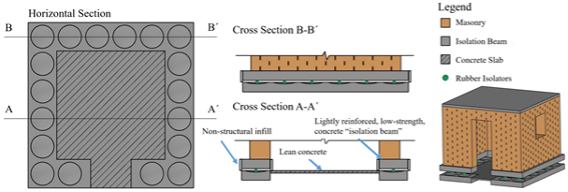E4D Fellow: Sergio Reyes Arriagada
Toward earthquake-resilient communities: Development of a low-cost seismic isolation system based on rolling rubber spheres

Project Duration: 2021 – 2024
Supervisor at ETH Zurich:
Prof. Dr. Michalis Vassiliou (Chair of Seismic Design and Analysis)
Collaborators:
external page Prof. Dr. Professor Marcial Blondet, Pontificia Universidad Catolica del Peru
Dr. Dario Candebat Sanchez, Centro Nacional de Investigaciones Sismológicas
Partner Institutions:
external page Pontificia Universidad Católica del Perú
external page Centro Nacional de Investigaciones Sismológicas
Project Description

Even though earthquakes are a global phenomenon, their impact in terms of fatalities is tremendously disproportionate, with most deaths being concentrated in lower-income countries. For instance, the 2010 Mw 7.0 Haiti earthquake caused more than 100,000 deaths, while the same year, the 2010 Mw 8.8 Maule earthquake in Chile caused less than 1,000 deaths (of which most of them were caused by a tsunami instead of direct structural collapses).
The main reason for these uncomfortable numbers is that structural design codes are not followed in lower-income countries. This is not because of some “propensity for delinquency”, but merely because following earthquake-resistant methods created in higher-income countries results in too expensive and unaffordable structures for poorer countries. Therefore, there is an urgent need for tailored solutions for these countries.
Seismic isolation is nowadays an effective and mature method for protecting structures from earthquakes; however, the cost of existing systems is affordable only to higher-income countries. This project aims to develop an affordable, practical, and effective seismic protection system for lower-income countries to be widely used in low-rise and low-cost building structures. Implementing such a system will help reduce casualties, building damage, and economic losses in the event of a major earthquake disaster, especially in low-income earthquake-prone countries.
The effectiveness of the developed system will be tested on full-scale shaking table tests with the collaborator institutions, and design guidelines will be developed and disseminated. Educational workshops and seminars to local practicing engineers and construction workers will be organized to educate community members about the high seismic vulnerability of their dwellings, and about seismically safe construction techniques based on seismic isolation.